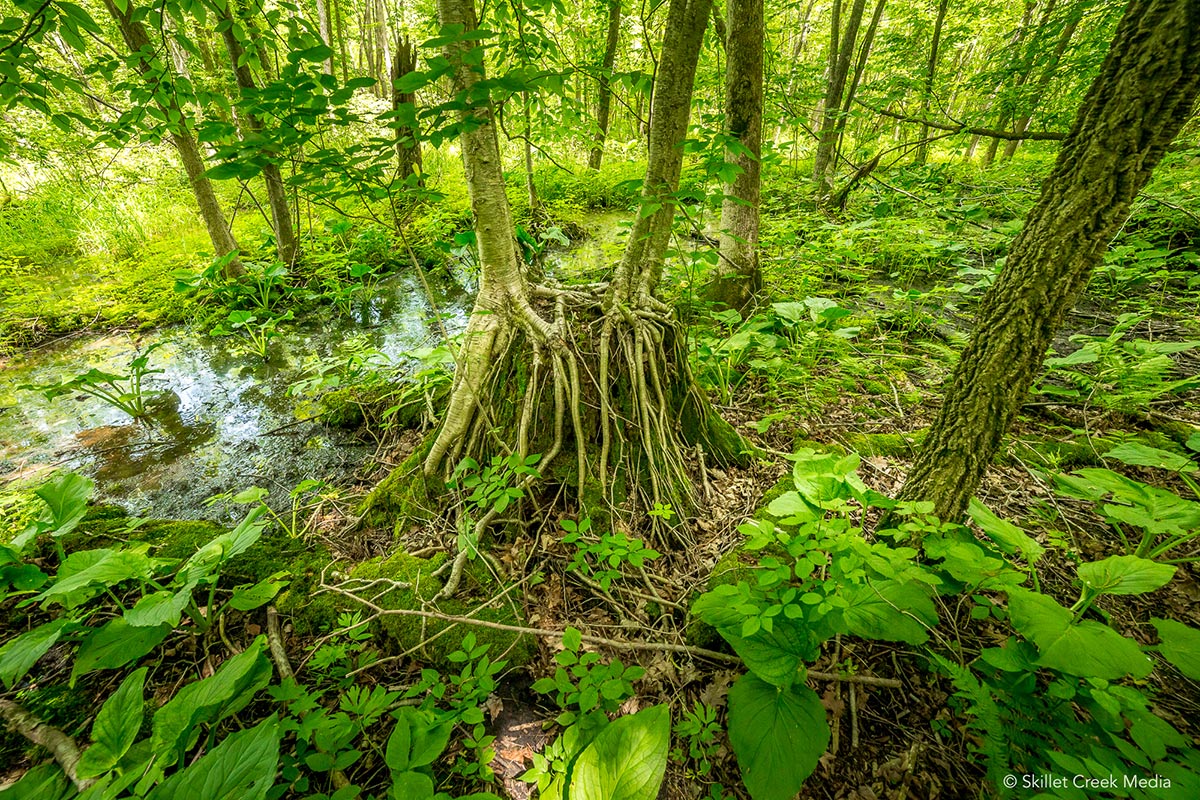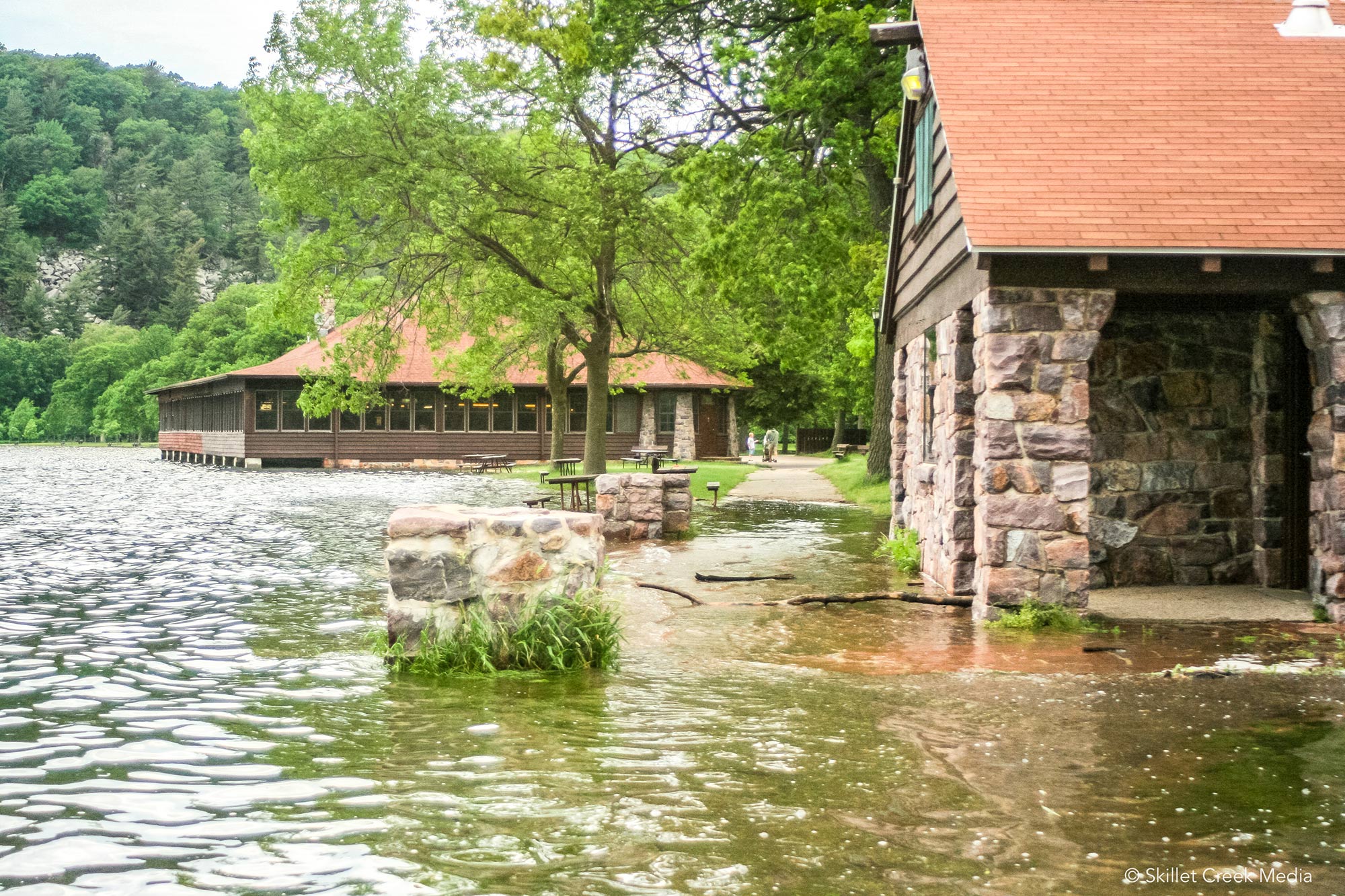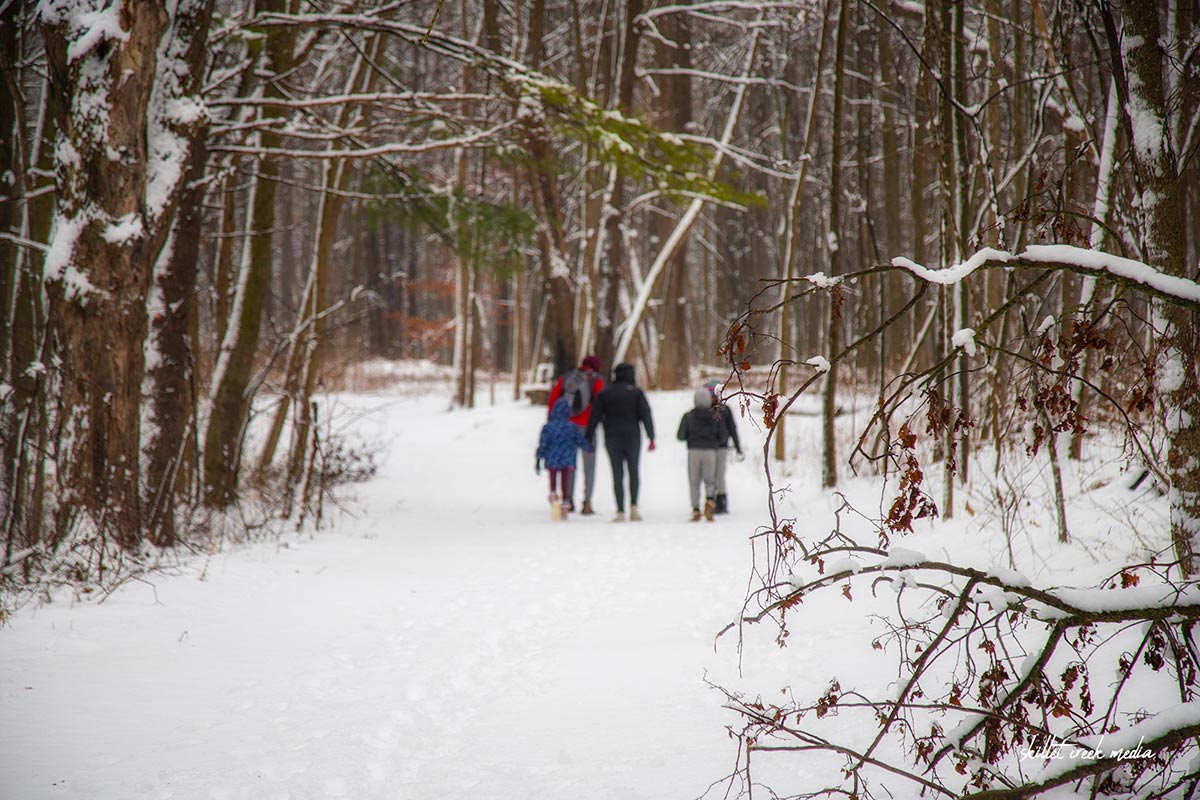Wisconsin State Natural Areas (SNAs) offer a fantastic opportunity to escape summer crowds and enjoy…
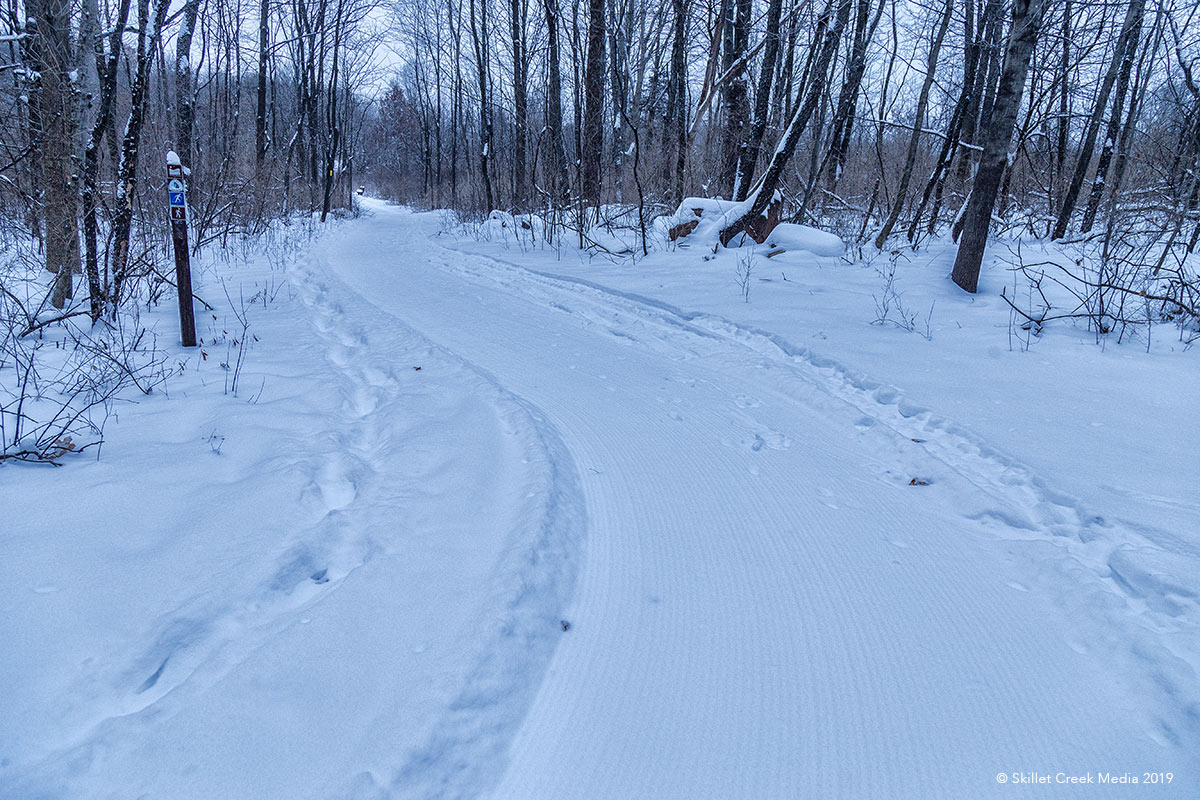
Devil’s Lake State Park’s Steinke Basin & Johnson Moraine/Ice Age Trails have been groomed. This is probably a bit confusing for hikers & snowshoers familiar with winter trail etiquette. So stay off the groomed trail, right? But “Multi-Use”?
Before about 2 years ago, Devil’s Lake State Park’s Steinke Basin & Johnson Moraine Trails were designated as ski trails. At that time, you were “not allowed” to hike, dog walk or snowshoe on the trails. Of course, there were a few problems with that. First, no one listened! People walked all over the trails anyway to the frustration of the skiers. The second big problem was that the trails were rarely groomed anyway. The third problem was the Johnson Moraine Trail as part of the National Ice Age Scenic Trail, was required to be open to hikers and snowshoers. Back then, we talked a lot about trail etiquette. Snowshoes and boots can really tear up a ski trail quickly.
Here’s what the park’s current conditions page says today..
You may ski or snowshoe almost anywhere in the park. Only a few miles of the parks 29 miles of trails are occasionally packed (but not groomed or tracked). The park no longer maintains any portion of trails exclusively for cross-country skiers.
So what do you do when the multi-use trail is groomed?
Well, in some cases hikers and snowshoers are expected to stay off of the groomed trail and walk alongside it. This works well, as long as the trail allows room for both uses. Sometimes, it’s said to simply stay off of the “rails” created by skiers, while the rest of the groomed trail is okay. Parts of the Steinke Basin trail are also used by fat tire bikes. (According to the DNR website bikes are allowed on both the Uplands & Steinke Basin Loops.) Now that we have snow and people are getting out there, I think the change in the trail status calls for a conversation.
It looks like most respectful users are trying to just stay to the side of the groomed trails. The problem is that trail is groomed right down the middle, which sometimes leaves little room on either side (Especially in the woods.) for hikers and snowshoers to stay off the groomed trail. Doubly so for people who are not used to snowshoeing through the brush and bramble of the forest floor. It’s worth noting that snowshoeing requires a wider stance than walking, so you actually need some space to snowshoe correctly.
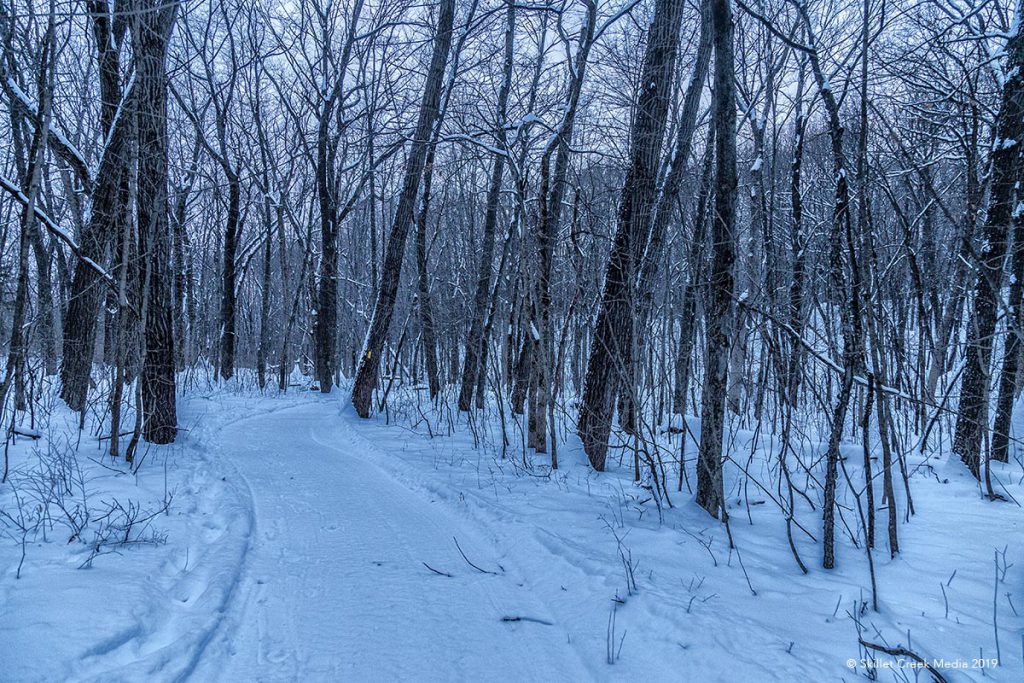
Room For Everybody
I think if we’re going to groom the multi-use trail AND ask snowshoers / hikers / dog walkers to stay off of the groomed section, we could adjust how we groom. I’d suggest not grooming right down the middle and leaving small spaces on each side, but to groom as far to one side as possible, while leaving as much space as possible on the other side for walkers and snowshoers. This won’t keep everyone off of the groomed section, but it would help. If the idea is that everyone can walk and snowshoe on the groomed section, then that needs to be posted clearly too. I also think we have to be clear about fat tires as well. Especially when sections of the Steinke Basin trail are part of the bike trail in summer.
Personally, I hate snowshoeing on groomed trails. While I know it’s easier in some ways, it can also be hard on the legs and feet. Snowshoes are not “crampons” for ice, but are meant for deep snow. Not only does the snow provide cushion under your snowshoes, but it also allows you to move correctly. I know first-timers find groomed trails to be easier, but it also encourages them to lift their feet and “stomp” which is not only tiring but isn’t efficient in deep snow. Thing is, folks who are learning will always be most comfortable on a trail, so it’s important that trails are open to them too.
Changing the Steinke Basin trails to multi-use does solve a lot of problems and given the popularity of snowshoeing and fat tire biking, it’s the right idea. Now we just have to focus on education and trail etiquette. To do that, we just have to know what the plan is. Communication is key.

For nearly 2 decades the Skillet Creek blog has focused on 3 main goals; To inspire you to visit and explore the Devil’s Lake region, to help you get the most your visit by sharing tips, events, and other helpful information. Lastly to advocate for our environment & wildlife and talk about how we can keep our natural areas amazing now and into the future! That last goal can sometimes cause controversy, but it’s the only way we can accomplish the first two. – Derrick Mayoleth, Owner.

